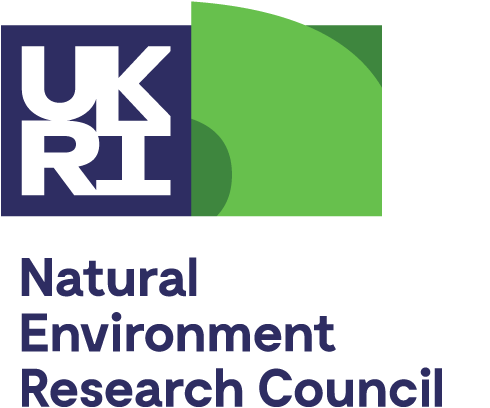CrEAM Network- Critical Elements and Materials Network Launch Event – University of Birmingham November 13th 2018
The CrEAM network has been established as a forum to bring together specialists from across the entire UK supply chain in critical materials. The aim is to develop strategies to mitigate supply risks of critical elements and materials, including the rare earth elements (REE), PGMs, cobalt, tellurium, selenium and other elements.
Centred at the University of Birmingham the network will run a series of workshops across 3 years encompassing the entire supply chain covering raw-material exploration, extraction, materials processing, applications and end-of-life recovery/recycling. The network will provide a forum to bring together specialists from across the entire UK supply chain in critical materials to create a coherent 'UK Element Strategy' document for UK government, including policy and funding recommendations to ensure a responsible, secure and environmentally efficient supply of critical materials vital to UK industry. It is also an aim to produce educational materials from this collaboration.
The launch event hosted speakers from across the supply chain and was introduced by Principal Investigator Allan Walton and by Co-Investigator Frances Wall (Frances representing the raw materials start of the supply chain).
A broad range of talks was kicked-off by Professor Rustam Stolkin who spoke on advanced robotics for handling waste materials. Advances in artificial Intelligence and robotics can be applied to sorting of electronic waste to win back metals and materials for reuse. Much of Rustam’s work is on the remote handling of radioactive wastes and these reliable tools can be applied to sorting of complicated electrical waste to win specialist metals from circuit boards and hard disk drives. Autonomous sorting machines will be employed ever increasingly in recycling industries.
The following talk by Dr Gareth Hatch of Innovation Metals Corporation (IMC) took us to minerals processing and the supply-chain bottleneck of efficient separation of REEs. Gareth outlined IMC’s RapidSX technology and their improvement of the well-known solvent extraction method of separating REEs from each other. The REEs in an intermediate stage of mixed REE carbonate or mixed REE hydroxide are digested into organic solvents where HREEs split-off initially into an organic phase and the LREEs into a raffinate, followed by additional selective separation steps before the REEs are finally isolated. The Rapid SX improvement of the process focusses on improved column designs to speed up reaction kinetics. At pilot scale IMC can currently process 12kg of mixed REE (or 8 tonnes per month). Oxides produced to date include NdPr and La oxides. The technology can also be applied to winning cobalt from Ni-laterites and to winning lithium from brines. The technology being developed at IMC is intended to help reduce capex and opex costs for processing plants. The technology has potential at assisting at the recycling end of the supply chain too – recovering metals from discarded catalysts, recovery of copper, and recovery of cobalt from SmCo magnets for example. IMC have interest in developing an upscale facility in the UK.
Following Gareth Professor Andrew Abbott from University of Leicester, keeping with the mineral processing theme, relayed his team's developments in processing metals and minerals using deep eutectic solvents. Andrew outlined the so-called green chemistry of "ionometallurgy", and how it is an alternative to well-known pyrometallurgy or hydrometallurgy. It is not expensive or as hazardous as many may think – choline chloride is a benign material for metal extraction and relatively low cost at £1 per kg. It can digest metals of interest and the metal subsequently won by electrochemical dissolution. Examples to date include the successful winning of the desirable PGM rhenium from Rolls Royce jet-engine scrap. Andrew also gave examples of where VB6 eutectic solvent can be used instead of acids in metal polishing, and the use of iodine compounds in the extraction of GeAs from spent solar cells. Andrew also pointed out that these liquids are highly tuneable and can be designed to target metals of choice. Another example is industrial clean-up of the smelting process where ionic liquids have been applied at recovering lead and cadmium from electric arc furnace dust. Challenges with the technology include the ability to upscale and the fact that certain metals pose challenges such as REEs and their large oxidation potentials. Tests on solubilisation of NdFeB magnets show a slow uptake of Nd – but perhaps more efficient liquids can be designed.
Following Andrew, Dr Emma Kendrick of The University of Warwick described the reclamation and reuse of lithium ion battery materials. The work involves the physical recovery of compounds from end-of-life lithium-ion batteries. Emma points out that it is important that these batteries have their power completely drained before the battery casing is opened. There is a still a real risk of electrical fire if not fully drained. The recovery of Li is by brine discharge, but it has been shown that salt water is too aggressive at corroding terminals – far better are "neutral salts" that can leave cleaner terminals. There is a necessity to control corrosion rates to efficiently preserve and win back the metals of interest. Lithium can be recovered in the salts and the electrode materials can be removed – aluminium in the cathode and graphite in the anode. The design of batteries does not assist in easy deconstruction – there are plastics films and foils to delaminate – thus producing a so called "black mass" after the shredding process. It would be much better if manufacturers designed batteries for easier dismantling at end-of-life.
Keeping with recycling, Allan Walton followed Emma by outlining the technology behind reclamation of REEs from NdFeB magnets. You can see how this is done and how the CrEAM network ties in with the Birmingham Centre of Strategic and Critical Materials by checking out my previous blogs here:
https://www.bgs.ac.uk/blog/birminghamCentre.html
https://www.bgs.ac.uk/blog/magneticMaterials.html
Following Allan, Chris Hall from UK REE alloy producer Less Common Metals (LCM) outlined the need for an integrated European rare earth supply. Chris reviewed the current supply situation around REE including the dominance of China, and the emerging ROW producers such as Lynas in Australia, Toyotsu operations in India, and Neo Materials in Estonia. LCM themselves are involved with EU H2020 projects SecREEts & REEcover, the later looking recovering REE from tailings of iron ore processing. Another project REE4EU is assessing the economic recovery of REE from fertilizer production by the company Yara in Norway.
Returning to processing technologies, Professor Lynne Macaskie, a biochemist from The University of Birmingham presented her work on the bio-recovery of strategic elements from wastes and up-conversion into high value materials. Her work on enzyme kinetics show that there is selectivity in separating REEs and thorium.
Emma Schofield from Johnson Matthey outlined the opportunities and problems around PGM recycling including the challenges at recovering PGMs from road dust, and the challenging economics around targeting catalytic converters and recycling them at end-of-life.
The talks were concluded by our very own Robert Pell where he outlined his work on life cycle analysis of REE deposits and how it could be applied to other critical materials. Rob pointed out that there will be a growing database of LCAs as the methodology is increasingly adopted – but there could be competing databases so perhaps some unification is required.
Following the talks, a break-out session considered 4 main themes:
- Challenges to extraction & processing
- Inviting additional centres of excellence to join the Cream Network
- What supply chains exist? Where are the gaps?
- Legal frameworks that need to change
Interesting points came out of the session. Takeaways included: the need to invite policy makers/government representatives to the CrEAM meetings. Perhaps UK and/or Europe should be centres of processing ores/recycling rather than focussing on opening mines. An "ingredients list" on cars so recyclers know what to target. Manufactures should design for recycling. The importance of allowing a blend of NERC and EPSRC projects.
The CrEAM Network website is currently under construction, but contact can be made here: cream@contacts.bham.ac.uk
Ed Loye, November 2018









